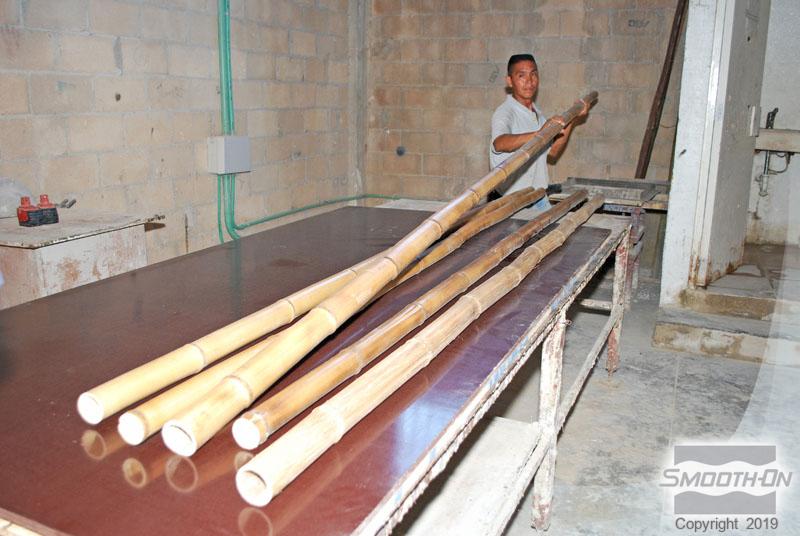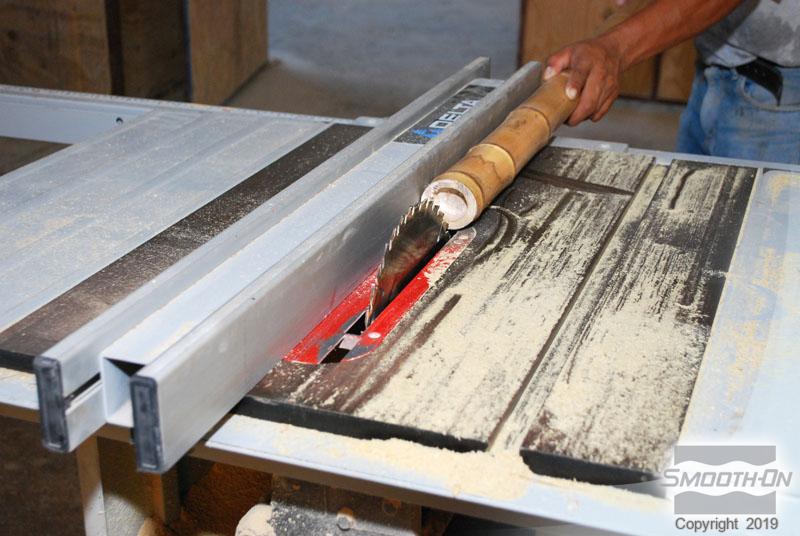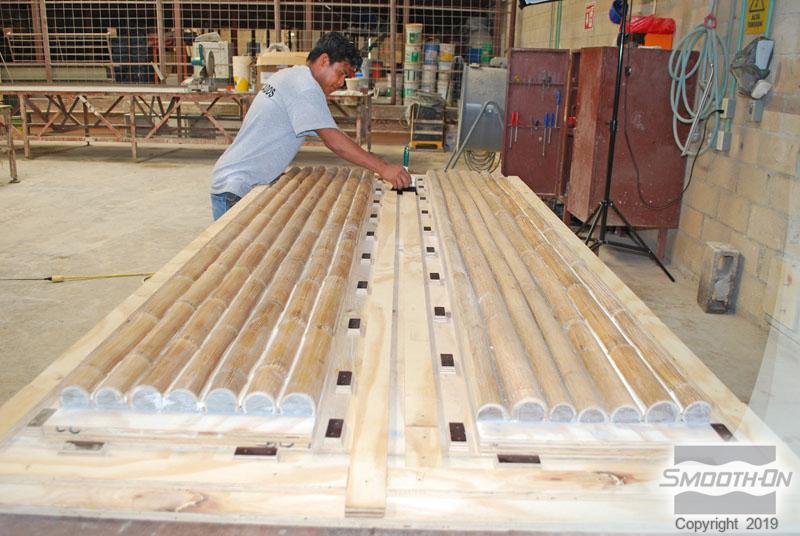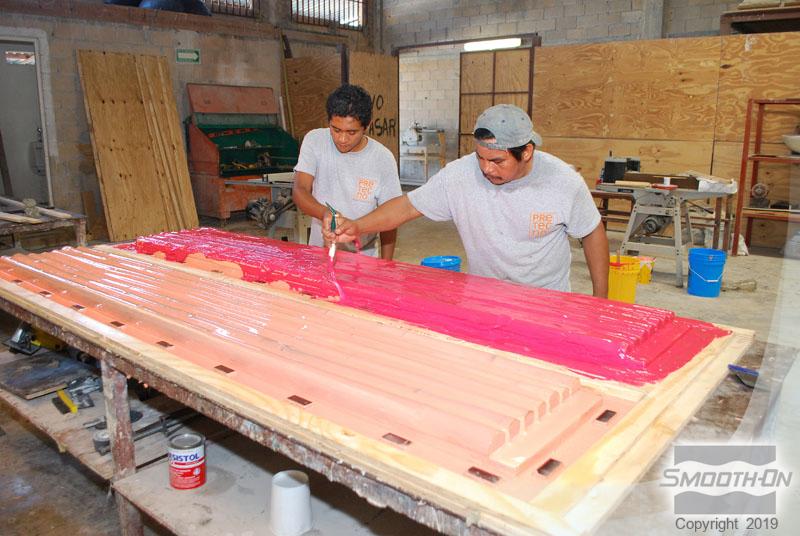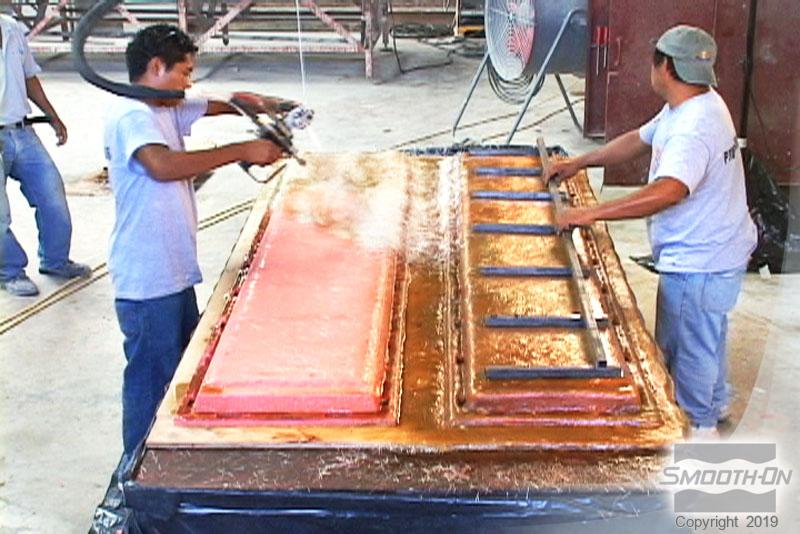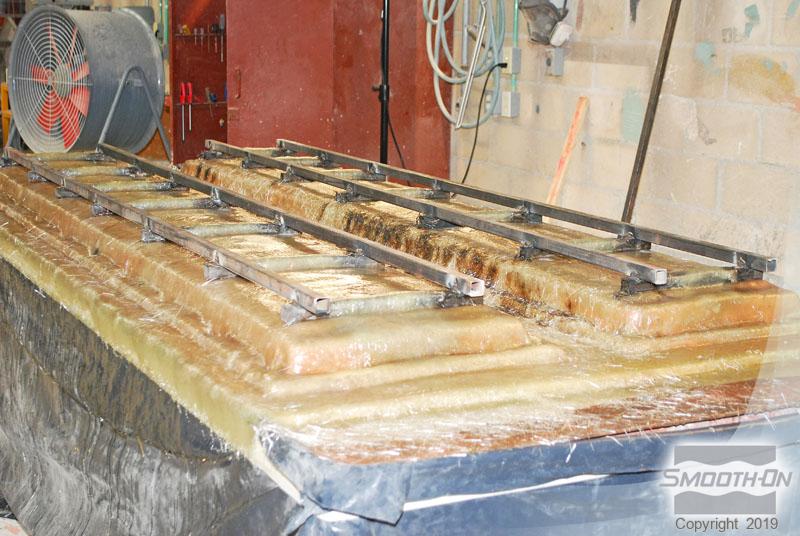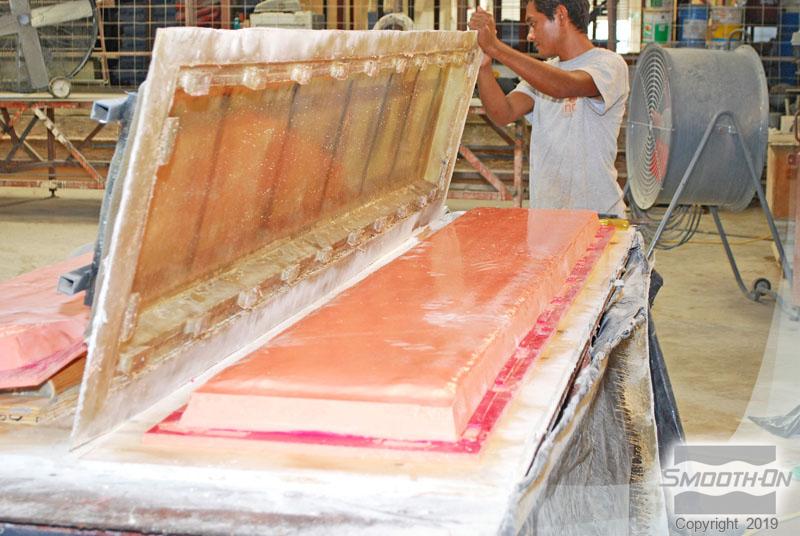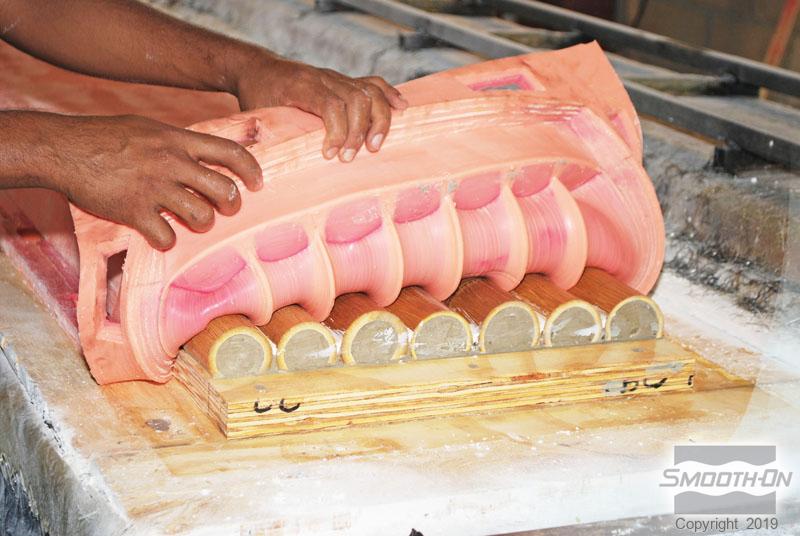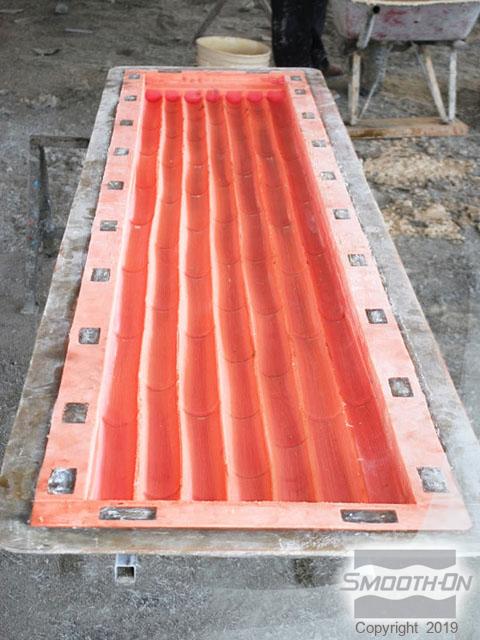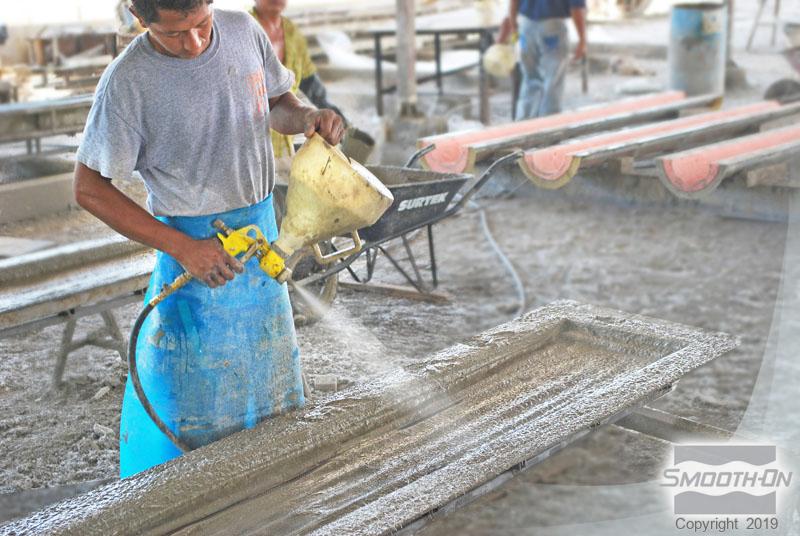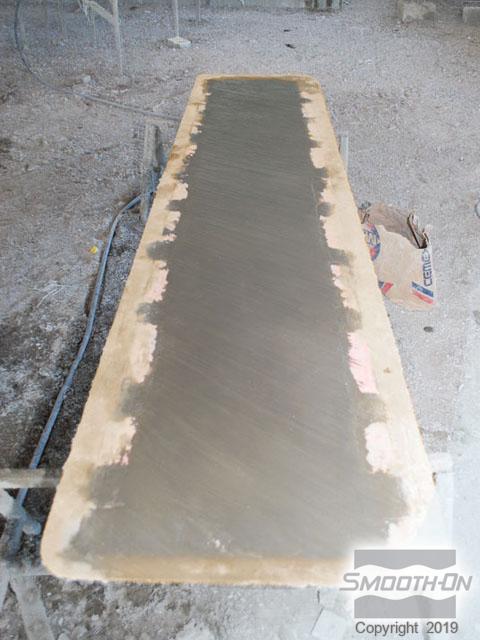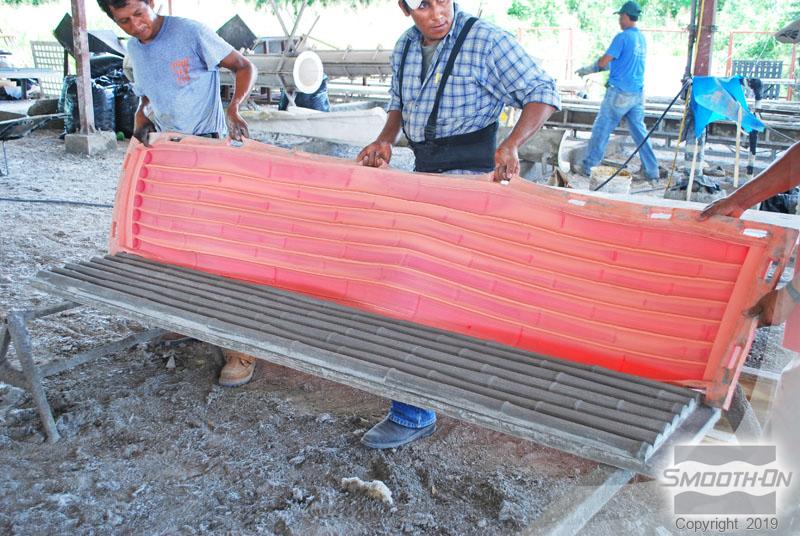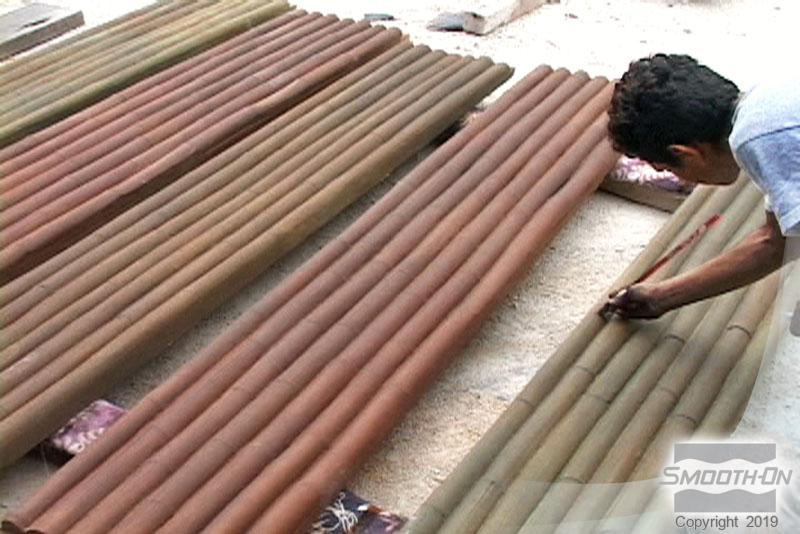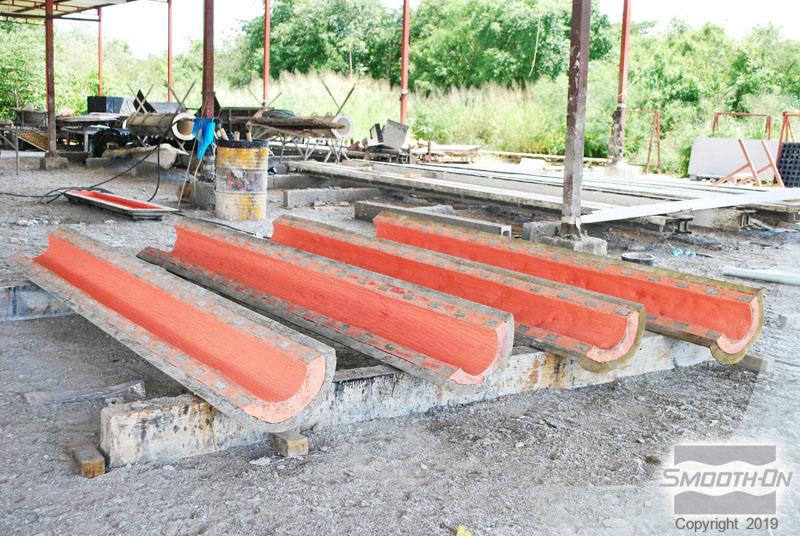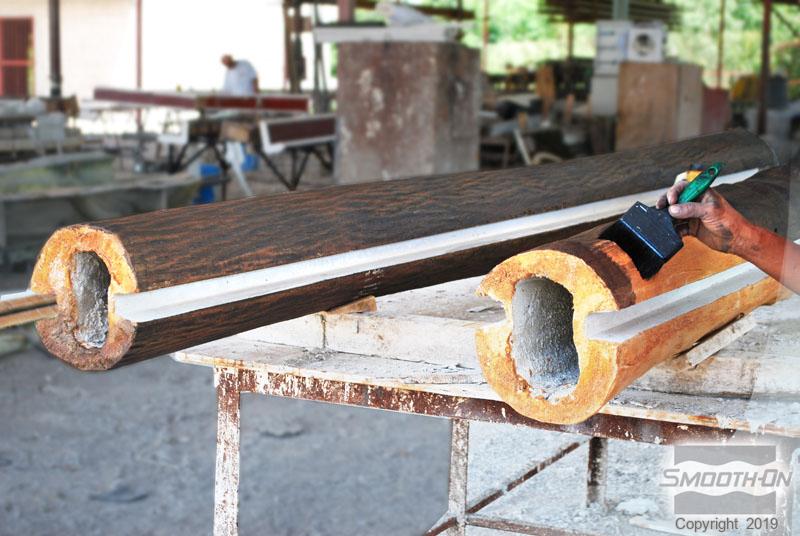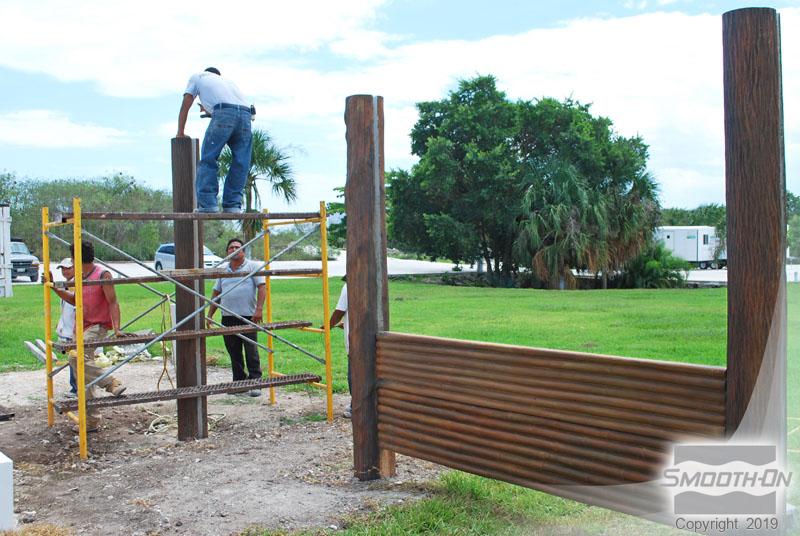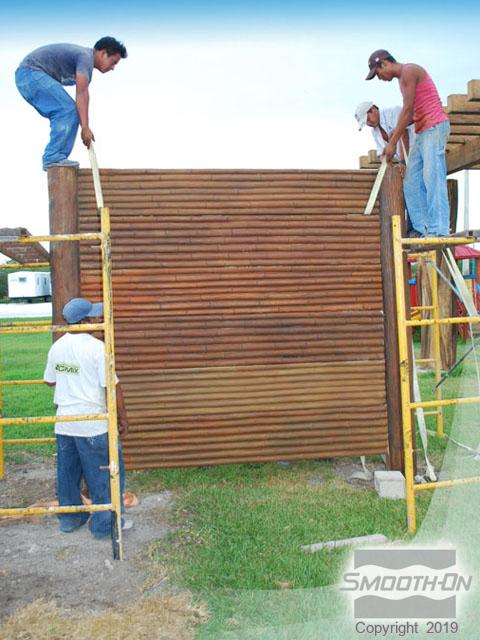How To Cast a Concrete Fence Which Exhibits Detail Never Seen Before
Overview
Unique mold making process quickly generates 11,880 lightweight concrete panels and 1,981 posts to form a 3 mile (4.8 km) decorative wall that will provide a safe and secure area for resort in Cancun, Mexico.
Established in 1999 and based in Cancun, PRETECNO, Inc. (division of Grumasa - España) is the premier builder for many large scale hotels and resorts around the world. Their consulting, design and fabrication services are sought out internationally and have been the driving force to PRETECNO’S rapid growth.
PRETECNO’S services were contracted to design and install a low-cost, low-maintenance fence system that would offer security as well as reflect the tropical theme of the surrounding environment of the resort. Mexico’s dynamic Cancun resort coast economy presents many societal challenges in the form of balancing the interests of the resort with that of the local population. The decorative fencing system is a solution that serves the best interests of all parties.
Many material and design options for the panels were considered. Panel material had to be physically indestructible and withstand weather extremes including high heat, high humidity and hurricane force winds and rain. Designers were also concerned with preserving the ecological beauty of the area. The overall design, right down to the texture of individual panels, needed to fit into the natural contours of the resort. Minimal impact on the surrounding environment was imperative.
The aesthetic design option that was deemed most desirable and attainable by artisans, was to simulate the look of bamboo.
The best material to meet the criteria was originally thought to be concrete. But panels cast to the prescribed size in concrete would have weighed just under 1,000 lbs (454 kg). Heavy equipment would have been necessary for installation, but deemed too damaging to the environment and not allowed at the installation site. Workers needed to transport, manipulate and install the panels by hand. The only material that would meet the criteria for appearance, durability and weight is Glass Fiber Reinforced Concrete.
Lead Engineer, José Hormiga, is a material expert with years of experience matching the right material for a specific job. He chose Rebound™ 25 brushable silicone to make the molds for several reasons:
- Rebound is easy to use and apply. Mr. Hormiga’s team was able to measure, mix and apply Rebound™ 25 successfully without a problem.
- Rebound cures quickly. Molds are in production next day.
- The rubber reproduced the detail of the bamboo perfectly. The detail was subsequently reflected in each and every concrete panel.
- Rebound is strong and “stretchy”. Rubber withstands the physical stress of demolding hundreds of highly detailed concrete castings.
- Rebound also withstands chemical attack from the GFRC.
- No Release Agent Allowed – Because finished panels needed to be stained, no release agent could be used. Rebound rubber releases GFRC castings without a release agent.
Project Specifics
- 11,880 GFRC Panels, 200 lbs. (90 kgs.) each
- GFRC weight reduction vs. cast concrete: 75%
- Panel Dimensions: 8’ long x 16” high x 2.5” thick (2.5m x 41cm x 6.4cm)
- 1,980 wall segments measuring: 8’ long x 8’ high x 2.5 in. thick (2.5m x 3.05m x 6.25 cm)
- Finished Wall Distance: 3 miles (4.8km)
- Contracted time to complete: 365 days
- Actual time to complete: 150 days
Right to the Bottom Line: Mr. Hormiga states that “Rebound 25 mold rubber proved to be an excellent investment. The cost of the Rebound 25 rubber relative to the number of castings taken from each mold was very low.”
Materials Used in this Tutorial
- Bamboo
- Rebound 25
- Thi-Vex
- Silc Pig
- Fiberglass
- Steel Tube
- GFRC
Step 1: Preparation
To create the original pattern, similar size pieces of bamboo are selected and cut in half. Half segments are stabilized and secured to the table top. Registration keys are affixed around the mold perimeter.
Step 2: Mold Making
Three separate layers of Rebound® 25 mold rubber are mixed and applied. Silc-Pig® red pigment is added to the 2nd layer to ensure thorough coverage. Thi-Vex® thickening agent is added between the 2nd and 3rd layers as needed to fill in deep detail and undercuts.
After all layers are allowed to cure, a mother mold made of fiberglass and resin is applied using a chop gun. Steel tube segments are placed and encapsulated in the fiberglass at strategic points to provide level support and prevent the support shell from distorting.
Step 3: Demold
The support shell is separated from the rubber mold and the rubber mold is then removed from the original bamboo model. Because Rebound® rubber does not stick to most surfaces, demolding is easy. The Rebound® mold reflects perfect detail captured from the bamboo. The rubber mold is seated into the support shell and is ready for casting.
Step 4: Casting with GFRC
A face coat of GFRC is sprayed onto the mold surface using a hopper gun, followed by a base pour of concrete and chopped glass. The mix is leveled off and allowed to cure for 4 hours.
Step 5: Demold & Finishing
The GFRC panel reflects 100% of the detail characteristics of the original bamboo model. Panels are then stained in a staging area prior to installation. Rebound® 25 was used to capture intricate detail from the bark of a Banyan tree.
Molds were used to make GFRC post castings used to support GFRC wall segments. GFRC post halves are assembled to form a single hollow post. Thinking ahead to installation, a channel guide is pre-fabricated into the posts to accommodate the GFRC panels. Stain is applied to the posts to reveal the detail of the Banyan tree bark.
Step 6: Building The Fence
Posts are secured in the ground with 18'' of concrete footing. Rebar reinforcement is used to marry new concrete poured into the hollow post with the footing.
Once cured, Artisans align lightweight GFRC bamboo panels with pre-fabricated channels in the posts which makes placement easy. Thanks to the tongue and groove channel system, installation of the panels goes quickly, with a wall segment (6 panels) completed in less than one hour.
